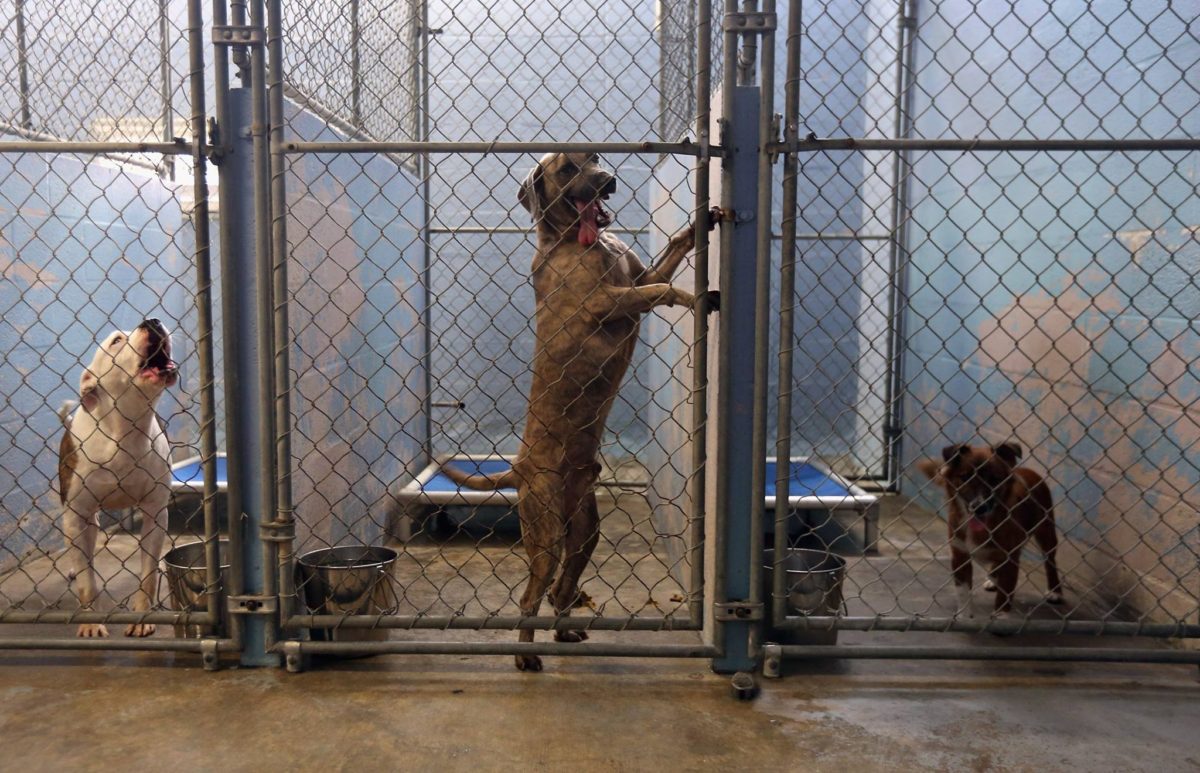
I’ve reported on various studies that have found that group housing, play groups, and plenty of socialization are absolutely crucial for dogs in shelters. Last week, I also reported about a new study on senior dogs that shelters need to go one step further and assign dedicated caretakers (i.e., a familiar face) as senior dogs “cope less efficiently with the emotional distress caused by a change of caretaker.”
Two other studies yield even more guidance on how best we can help animals in shelters. The studies — one with dogs and the other with cats — set out to determine how staff interactions with animals could influence whether the animals approached the front of their kennels/cages when potential adopters walked by. The study authors noted that “People who adopted a dog reported that when they first met the dog, [she/he] approached them:” and that “adopters preferred dogs” who, among other things, “stayed at the kennel front.” Likewise, cats are more likely to get adopted quickly if they “approach potential adopters, are friendly, meow, rub against them or play with them.”
What should shelter staff and volunteers be doing to encourage this kind of behavior?
As to dogs, the study found that “approach behaviour” is likely to be a result of “management and enrichment practices that create the anticipation of a positive event when humans come to the kennel.” In other words, they found that dogs were more like to approach the front of their kennels if staff and volunteers regularly provided toys, treats, soft bedding, and frequent visits. That way, people were positively associated with good things and new things. But beyond the treats, the core of the finding was that approaching people was the result of being treated kindly.
Rough handling by staff leads to fear in the dogs, making them less likely to approach strangers (i.e., potential adopters). By contrast, “shelter dogs treated with daily positive human contact spend more time near a person crouched against the kennel door.” This is intuitive and obvious. But the study went one step further. It determined that you can correlate the likelihood of dogs approaching the front of their kennels based solely on the “attitudes” of the staff. Why? If staff had a positive attitude, they would be committed to “gentle and predictable dog handling.”

Although there were similar findings in the cat study (“positive vocal and tactile contact” including “regular petting” increased the “cats’ approach behaviour toward humans”), it was less strongly correlated and subject to other factors: the number of hiding boxes, the kind of barrier door involved, and whether the cats were single housed or group housed. There was also more variability in terms of cat personalities and how much contact they chose to initiate (ah, cat indecision:).
But like the dogs, the most important factors were staff attitudes and whether staff members genuinely liked cats. The more they did, they more they had positive and frequent interactions with the cats, the happier the cats were, the more likely the cats would be to see humans positively, the more likely they would be to approach potential adopters, and the quicker they would get adopted.
In fact, the study authors went even further here, too. They concluded that staff and volunteers who live with cats correlated most strongly with these outcomes. Why? People who lived with cats “were found to have a more positive view of cats” than those who did not and they would spend more time interacting gently and positively with the cats.
And yet, too often, animal shelters are staffed with people who don’t care; who understand that they have the power to kill each and every one of these animals, and will in fact kill most of them, so that every interaction they have with those animals is influenced by the perception that their lives do not matter, that their lives are cheap and expendable, and that they are destined for the garbage heap.
If we are to encourage happy dogs and cats in shelters who approach potential adopters and thus get adopted quicker and in greater numbers, working at a shelter has to be a mission, not just a job. First and foremost, employees considered for the position have to love animals. As such, “do you have pets?” and “tell me about them” might just be the two most important things to ask during a job interview.
Finally, the studies took place in Austrian shelters and the authors note rather casually, “Austrian law does not permit the [killing] of dogs [and cats]” simply because they lack a home. As such, these animals are kept until they are adopted or reclaimed. In the end, though not the focus of the study, that might be the most important takeaway of them all: there’s a legal precedent for banning the killing of animals in shelters.
The dog study, “Approach behaviour of shelter dogs and its relationships with the attitudes of shelter staff to dogs,” is here.
The cat study, “Is there a relationship between attitudes of shelter staff to cats and the cats’ approach behaviour?,” is here.
————-
Have a comment? Join the discussion by clicking here.